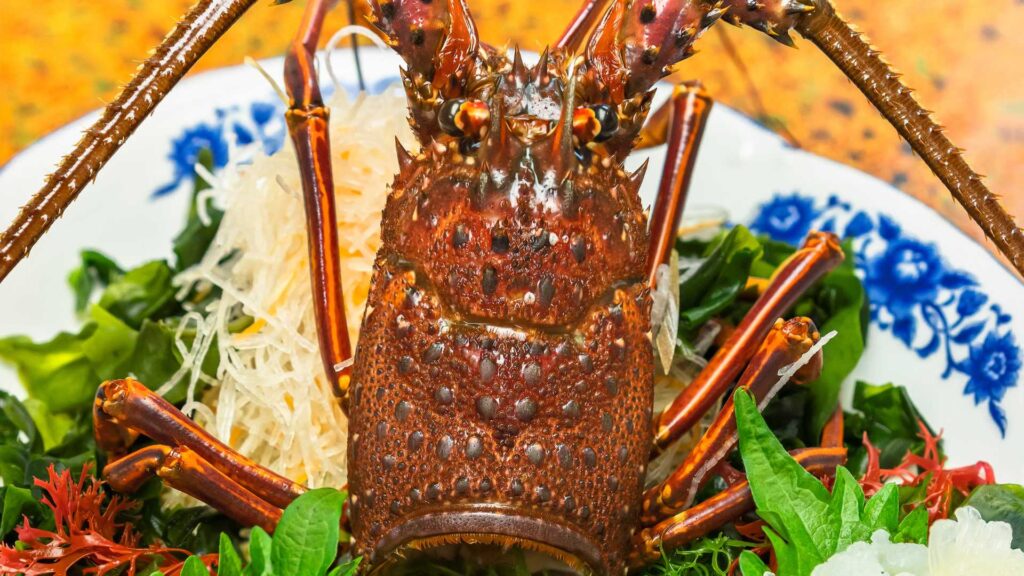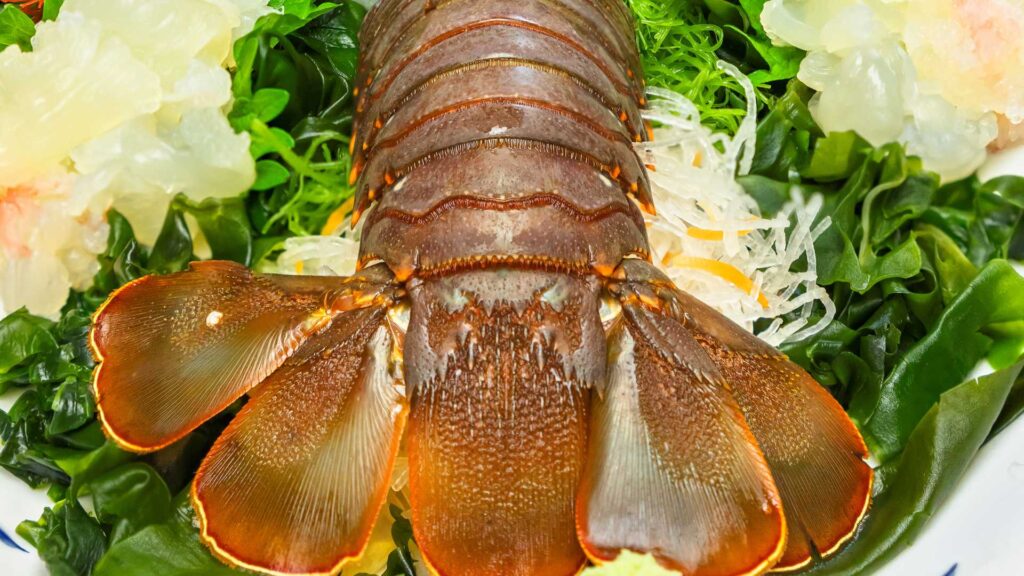Ise-ebi (伊勢海老) or Japanese spiny lobster is a seasonal Izu peninsula delicacy that is harvested from the sea between mid-September and early May. They’re known for their distinctive red and spiny shell and their elongated antennae. Ise-ebi are usually prepared boiled (whole), grilled (halved) or in raw sashimi pieces.
About Ise-ebi
Ise-ebi, or Panulirus japonicus are part of the Palinuridae or spiny lobster family, in the Achelata infraorder which includes spiny lobster, slippery lobster, and furry lobsters.
Because Ebi in Japanese means shrimp, at first I thought the famous ise-ebi were actually very large shrimps (Ise-ebi are usually 20-30 cm long). Turns out, that’s not the case.
The key feature that differentiates the ise-ebi from both typical lobsters and shrimp is that they have long, spiny antennae instead of bulky claws. They also don’t have large clawed legs like ‘true’ lobsters do, so they just rely on their antennae for sensing and defense.
Ise-Ebi habitats and geography
Ise refers to a the Ise region in Mie prefecture, the region most famous for Ise-ebi. However, ise-ebi are caught in many areas in Japan including Izu, Chiba, and Wakayama.
Ise-ebi are most common in coastal areas where sub-tropical underwater currents collide with with rocky coastlines.

Where to eat Ise-ebi on Izu Peninsula
In Izu, the village of Minami-Izu on the southern tip of the peninsula is a stand-out location to try ise-ebi. Here, the Ise-ebi Matsuri festival is held ever October and November, celebrating the bounties of the annual Ise-ebi catch.
In the autumn or winter in Minami-Izu, you’ll find ise-ebi on just about every Japanese restaurant menu around town. Local seafood stores lined with live fish tanks will also usually have a few ise-ebi for sale, based on the market catch.
In Minami-Izu, we ate ise-ebi at the seafront restaurant Aoki Sazae, which has a small convenience store, live seafood shop, and guesthouse attached. Here, you can choose your ise-ebi straight from the day’s market catch, selecting a size that suits you. The menu also offers ise-ebi lunch sets with half of a grilled ise-ebi as well as steaming bowls of ise-ebi ramen. Based on the size of the lobster, prices can range from 2000 to 5000 yen.
Other places to eat ise-ebi on Izu Peninsula include Tsuji and Ebi-Man near Shimoda, or Shiinokiyama and Izu Okada in Minami-Izu. Because ise-ebi are caught seasonally, be sure to confirm they’re on the menu before visiting.

Cooking your own Ise-ebi
In Japan, ise-ebi is a seasonal luxury that’s most often enjoyed at specialty restaurants or at overnight ryokan stays in Izu during autumn and winter. Its price and seasonality mean it’s rarely cooked at home, making it a true special-occasion treat.
If you do decide to cook ise-ebi at home, we recommend to boil it so you can enjoy its natural flavors. It’s also common to cut the entire lobster length-wise and grill it as well, with a brush of butter, soy sauce, or miso.


